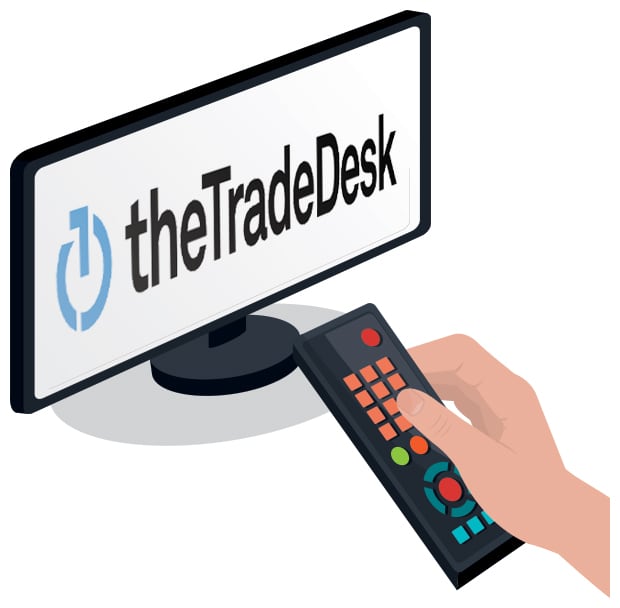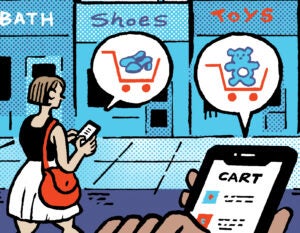 The Trade Desk’s stock was up nearly 5% in after-hour’s trading on Thursday, despite posting a 13% year-over-over dip in revenue in the second quarter.
The Trade Desk’s stock was up nearly 5% in after-hour’s trading on Thursday, despite posting a 13% year-over-over dip in revenue in the second quarter.
To what does TTD owe this optimism? Two words: connected TV.
“We believe that the COVID pandemic has permanently accelerated the growth of CTV,” CEO Jeff Green told investors on the company’s earnings call Thursday. “It’s changing the TV landscape forever.”
Although revenue declined to $139.4 million from nearly $160 million in the year-ago quarter, CTV spend grew roughly 40% year over year. And The Trade Desk anticipates CTV spend will more than double this quarter’s growth rate to around 80% in Q3.
Despite the significant pullback in ad demand, The Trade Desk has benefited from an anemic upfront season, the ongoing flight from user-generated content toward more premium environments and the uptick in CTV consumption during the pandemic, Green said.
Although The Trade Desk ended Q2 with a revenue decline, spend on its platform has increased every month since April and nearly every consecutive week, and this has remained true into July.
AVOD all the way
CTV is obviously growing. The Trade Desk’s internal research suggests that 11% of US households will cut the cable TV cord by the end of the year, up from 3% in the previous year. But there are structural changes that need to go down in the market to truly unlock the opportunity.
One of those changes is happening right now, Green said.
“For the first time, a massive amount of really premium content has come into data-driven internet-fueled media – and that’s AVOD,” he said.
ViacomCBS-owned Pluto TV reported three times the viewing hours in April than it had at the beginning of the year, while Fox’s Tubi reported a 100% increase in its viewing hours in April. And NBCU’s streaming service Peacock is off to a promising start after launching in July.
AdExchanger Daily
Get our editors’ roundup delivered to your inbox every weekday.
Daily Roundup
UGC you later
AVOD’s star is also rising as advertisers question the value, and the brand safety risks, of being associated with user-generated content.
The promise of an easy way to reach a massive audience at scale is obviously still hugely compelling. Facebook, for example, hit a milestone of more than 9 million paying advertisers in its second quarter, despite a looming advertiser boycott. But advertisers are starting to rethink their strategies around the platform, Green said.
“It’s an impossible task for UGC platforms to be asked to judge what is truth or what is hate, especially the largest companies, given the amount of content that is posted to their platforms every day,” he said. “But for advertisers, increasingly, it’s a risk they don’t want to take.”
No IDFA, no prob
Speaking of risk, the future of identity and targeted advertising is being hashed out right now on GitHub and in boardrooms in Cupertino. Google is phasing out third-party cookies on Chrome by 2022 and Apple will greatly restrict the use of its proprietary ad ID, the IDFA, starting with iOS 14 in September.
But Green shrugged off Apple’s changes, noting that “only about 10% of our spend uses IDFA anyway,” and repeated something he’s said on previous calls – that he doesn’t believe Google will actually kill third-party cookies in Chrome.
“I’m still not convinced that Google, in the end, will get rid of third-party cookies, and even if they do, cookies will be replaced with something else that enables targeted advertising,” Green said. “I do not believe that Google will have the ability to turn off targeted advertising for everyone else but them.”
Even so, The Trade Desk is furiously planning for a cookieless future with Version 2.0 of its Unified ID solution, which will depend on encrypted email addresses, rather than third-party cookies. The ID is in development and a beta version should be “in market soon.” Eventually, after incubating the solution, The Trade Desk plans to make it open source.
“This work is important,” Green said, “because cookies are an archaic technology that need to be upgraded.”













